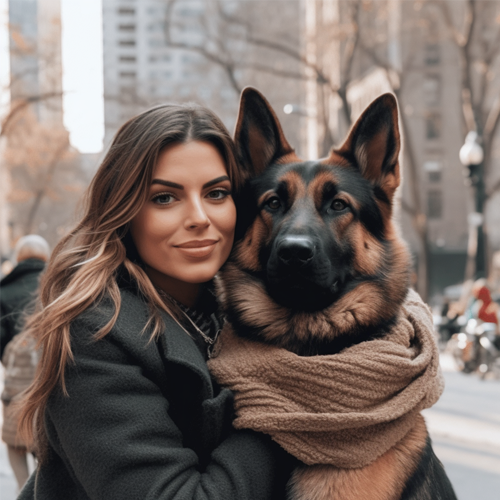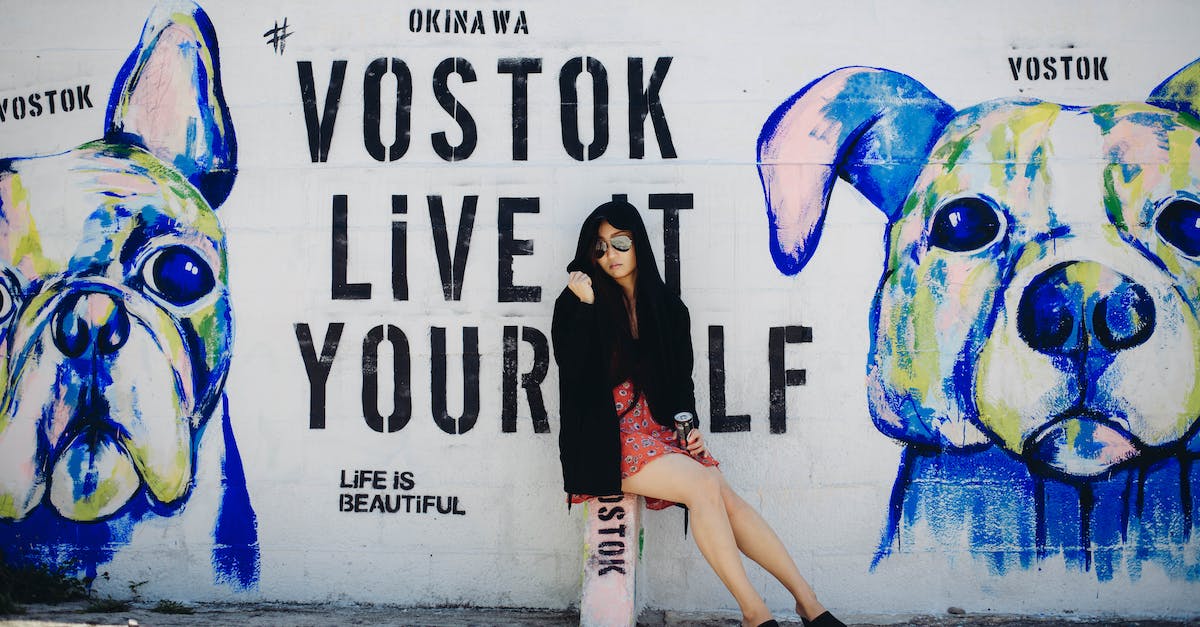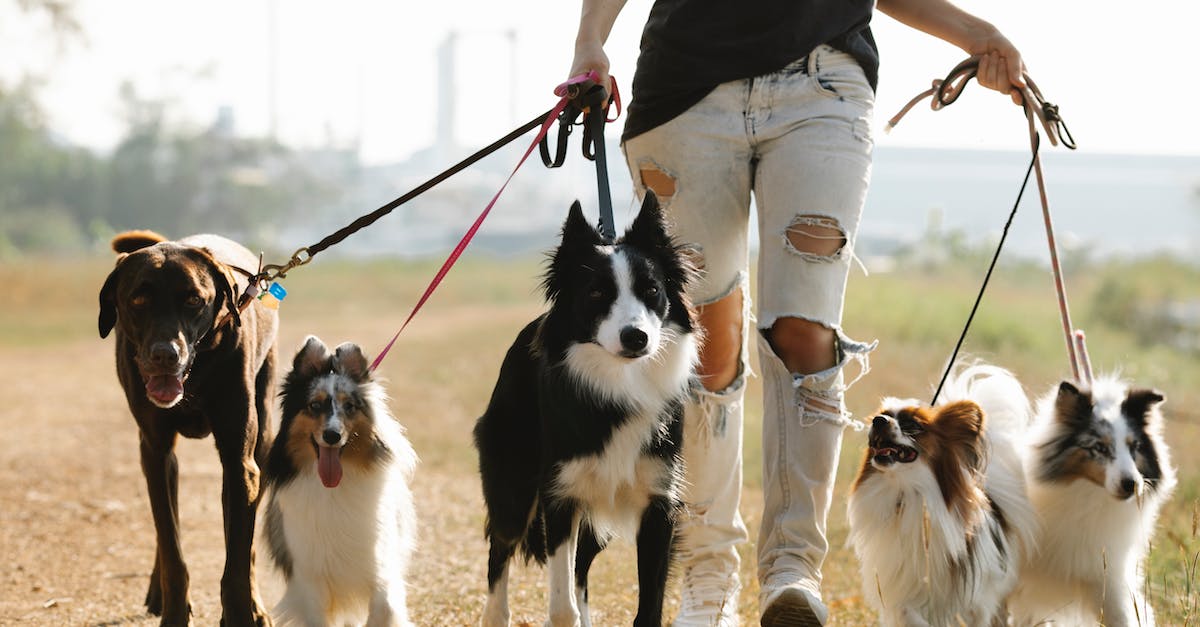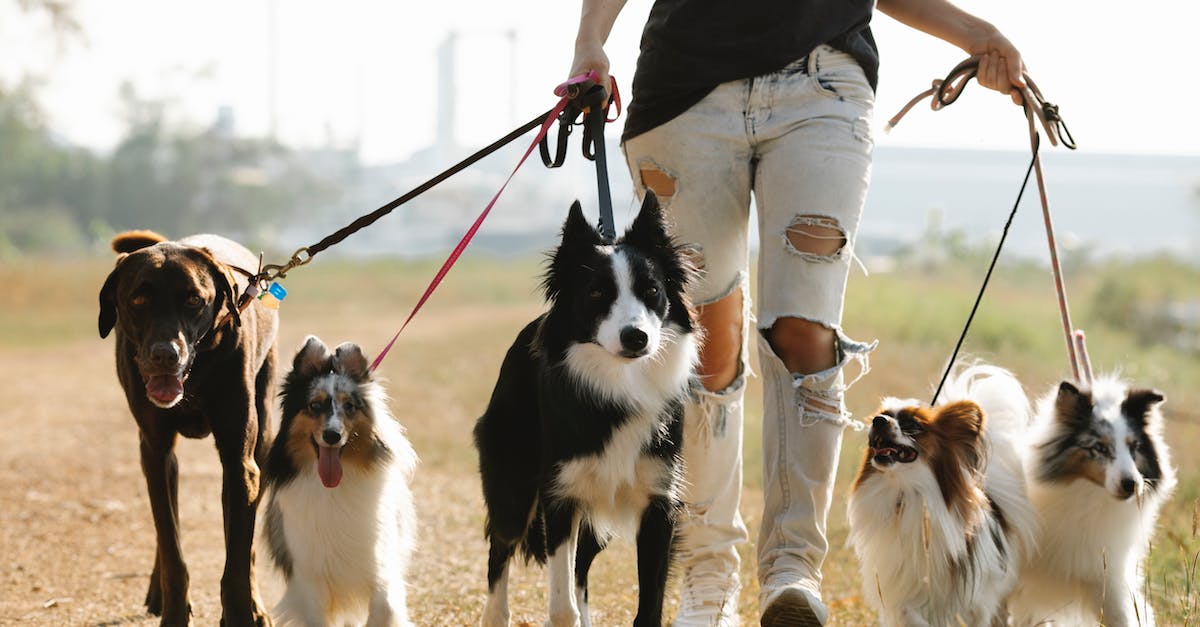Introduction
Dogs are one of the most beloved pets in the world, and their hair is a defining characteristic of their appearance. But have you ever wondered how many hairs a dog has? It may seem like a trivial question, but understanding a dog's hair growth and shedding patterns is important for their health and wellbeing.
There are many misconceptions about dog hair, such as the belief that all dogs shed equally or that shaving a dog will reduce shedding. In this blog post, we will clarify these misconceptions and provide you with valuable information about dog hair.
Knowing how many hairs a dog has is important for several reasons. First, it can help with allergies and shedding control. If you or someone in your household has allergies, knowing which breeds of dogs have fewer hairs can help you choose a pet that won't trigger your allergies. Additionally, understanding a dog's hair growth and shedding patterns can help you manage shedding and keep your home clean.
Proper hair care is also essential for a dog's health and wellbeing. Regular grooming, proper nutrition, and avoiding harsh chemicals can all contribute to healthy hair growth and a shiny coat. By understanding the factors that determine how many hairs a dog has and how to care for their hair, you can help your furry friend look and feel their best.
In the following sections, we will discuss the factors that determine the number of hairs on a dog, provide statistics on the average number of hairs on different breeds of dogs, address common myths and misconceptions about dog hair, and provide tips for caring for a dog's hair. So, let's dive in and learn more about our furry friends' hair!
Table of Content
- What Determines the Number of Hairs on a Dog?
- How Many Hairs on Average Does a Dog Have?
- Why is Knowing the Number of Hairs on a Dog Important?
- Myths and Misconceptions About Dog Hair
- How to Care for a Dog's Hair
- Conclusion
What Determines the Number of Hairs on a Dog?
Dogs come in all shapes and sizes, and so does their hair. But have you ever wondered what determines the number of hairs on a dog? There are several factors that play a role in a dog's hair growth and shedding patterns.
Breed: Different breeds of dogs have different hair types and densities. For example, a Poodle has curly, dense hair, while a Greyhound has short, fine hair. This means that the number of hairs on a Poodle will be much higher than on a Greyhound.
Size: The size of a dog also affects the number of hairs they have. Generally, larger dogs have more hair than smaller dogs. This is because they have a larger surface area to cover.
Age: As dogs age, their hair growth slows down and they may start to lose hair. This is a natural part of the aging process and is nothing to be concerned about unless it is excessive.
Health: A dog's overall health can also affect their hair growth and shedding patterns. Dogs that are healthy and well-nourished tend to have healthier hair than those that are not.
Genetics: Finally, genetics play a significant role in a dog's hair growth and shedding patterns. Just like humans, dogs inherit certain traits from their parents, including their hair type and density.
Understanding what determines the number of hairs on a dog can help you better care for your furry friend's coat. By knowing their breed, size, age, and overall health, you can anticipate their hair growth and shedding patterns and take appropriate measures to keep their coat healthy and shiny.

How Many Hairs on Average Does a Dog Have?
Dogs come in all shapes and sizes, and so does their hair. The number of hairs on a dog can vary greatly depending on the breed, size, and hair type. On average, a dog has around 5 million hairs on its body. However, this number can range from 1,000 hairs on a Chinese Crested to over 200,000 hairs on a Tibetan Mastiff.
Short-haired breeds tend to have fewer hairs than long-haired breeds. For example, a Beagle has around 20,000 hairs, while a Golden Retriever has around 65,000 hairs. However, the density of the hair can also play a role in the overall number. A Poodle may have fewer hairs than a Golden Retriever, but their curly hair is denser, giving them a fuller appearance.
It's important to note that the number of hairs on a dog can also change throughout their life. Puppies have fewer hairs than adult dogs, and senior dogs may experience hair loss due to aging or health issues.
Understanding the average number of hairs on a dog can be helpful for grooming purposes. It can give you an idea of how much shedding to expect and how often your dog may need to be brushed or groomed. It can also be useful for allergy sufferers who are looking for a hypoallergenic breed with fewer hairs.
Overall, while the number of hairs on a dog may seem like a trivial detail, it can actually provide valuable insight into a dog's health and grooming needs.

Why is Knowing the Number of Hairs on a Dog Important?
Dogs are beloved pets and companions for many people around the world. They come in all shapes and sizes, with different coat types and colors. One important aspect of a dog's coat is the number of hairs it has. Knowing the number of hairs on a dog is important for several reasons.
Firstly, understanding a dog's hair growth and shedding patterns can help with grooming. Regular grooming is essential for a dog's health and wellbeing. It helps to remove dirt, debris, and dead hair from the coat, preventing matting and tangling. Knowing how many hairs a dog has can help owners determine how often they need to groom their pet. For example, a dog with a thick coat may need to be groomed more frequently than a dog with a thin coat.
Secondly, knowing the number of hairs on a dog can help with allergies and shedding control. Some people are allergic to dog hair, and knowing the number of hairs on a particular breed can help them choose a dog that is less likely to trigger their allergies. Additionally, understanding a dog's shedding patterns can help owners manage the amount of hair that is shed in their home. By grooming their dog regularly and using tools such as shedding brushes, owners can reduce the amount of hair that is shed.
Finally, understanding a dog's hair growth and shedding patterns can provide insight into their overall health. Changes in a dog's coat, such as excessive shedding or bald patches, can be a sign of an underlying health issue. By monitoring their dog's coat and knowing how many hairs it has, owners can detect potential health problems early and seek veterinary care if necessary.
In conclusion, knowing the number of hairs on a dog is important for several reasons. It can help with grooming, allergies and shedding control, and provide insight into a dog's overall health. By understanding their dog's coat, owners can provide the best possible care for their furry friend.

Myths and Misconceptions About Dog Hair
Dogs are one of the most beloved pets in the world, and their hair is a defining characteristic. However, there are many myths and misconceptions about dog hair that can lead to confusion and misinformation. One of the most common myths is that shaving a dog will reduce shedding. This is not true, and in fact, it can actually make shedding worse.
When a dog's hair is shaved, it can disrupt the natural growth and shedding cycle. This can cause the hair to grow back thicker and coarser, which can lead to more shedding. Additionally, shaving a dog can leave them vulnerable to sunburn and other skin problems.
Another myth about dog hair is that certain breeds are hypoallergenic. While some breeds may produce less dander than others, there is no such thing as a completely hypoallergenic dog. All dogs produce dander, which is a common allergen. However, regular grooming and cleaning can help reduce the amount of dander in the home.
It's also important to note that a dog's hair is not the only factor that contributes to allergies. Other allergens, such as pollen and dust, can also cause allergic reactions in some people.
Finally, some people believe that dogs with short hair shed less than those with long hair. While it's true that long-haired dogs may shed more visibly, all dogs shed to some degree. The amount of shedding can vary depending on the breed, but regular grooming and cleaning can help keep shedding under control.
In conclusion, there are many myths and misconceptions about dog hair that can lead to confusion and misinformation. It's important to understand the truth about dog hair in order to properly care for our furry friends. Regular grooming, proper nutrition, and a clean living environment can all help keep a dog's hair healthy and reduce shedding.

How to Care for a Dog's Hair
Caring for a dog's hair is an essential part of keeping them healthy and happy. Regular grooming is the most important aspect of hair care for dogs. Brushing your dog's hair regularly helps to remove any tangles or mats that may have formed. It also helps to distribute natural oils throughout the coat, which keeps the hair healthy and shiny.
When brushing your dog's hair, it's important to use the right type of brush for their coat. For example, a slicker brush is best for long-haired breeds, while a bristle brush is better for short-haired breeds. You should also be gentle when brushing your dog's hair, as their skin can be sensitive.
In addition to regular grooming, proper nutrition is also important for a dog's hair health. A diet that is rich in protein and essential fatty acids can help to promote healthy hair growth and reduce shedding. You should also avoid feeding your dog table scraps or low-quality dog food, as these can lead to poor hair health.
Finally, it's important to avoid using harsh chemicals on your dog's hair. This includes shampoos and conditioners that contain sulfates or other harsh ingredients. Instead, look for products that are specifically designed for dogs and are free from harsh chemicals.
By following these tips, you can help to keep your dog's hair healthy and shiny. Proper hair care not only improves their appearance, but it also promotes overall health and wellbeing. So, take the time to care for your dog's hair and enjoy the benefits of a happy and healthy pet.
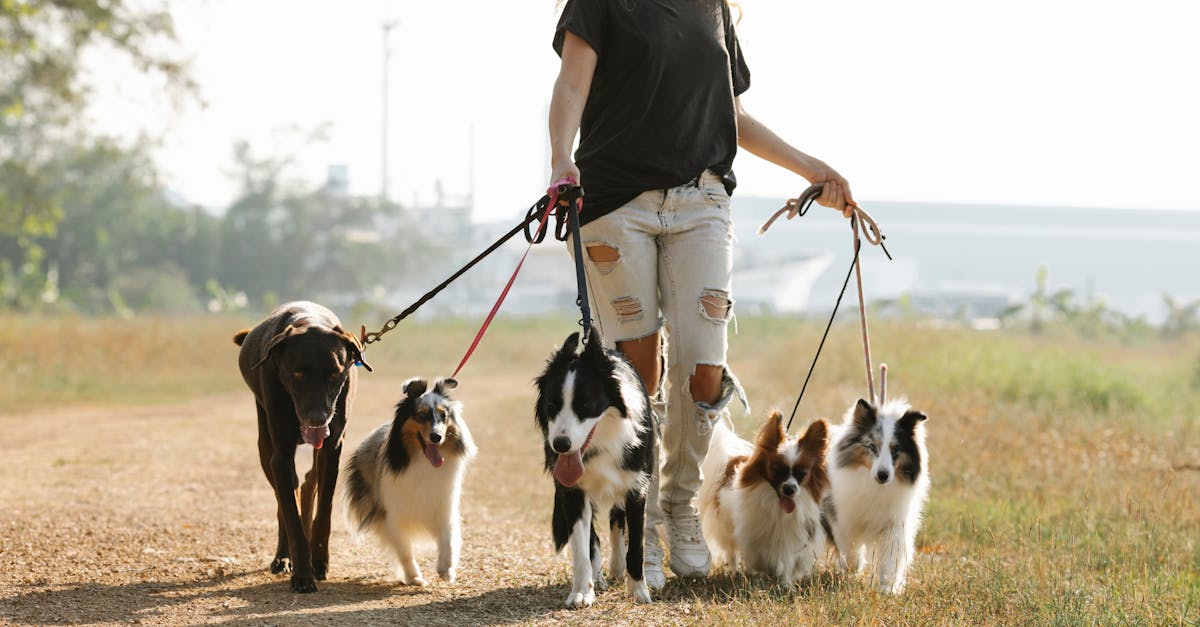
Frequently Asked Questions
How many hairs does a dog have per follicle?
Dogs typically have one hair per follicle, which is different from humans who can have multiple hairs per follicle.
Does a dog have hair or fur?
Dogs have fur, not hair. Fur is a thicker, longer, and more densely packed type of hair that grows on mammals. It provides insulation and protection from the elements, while hair is thinner and shorter.
How many hairs are on a cat?
It is estimated that cats have around 60,000 to 120,000 hairs on their body, depending on their breed and size.
What is the difference between fur and hair on a dog?
Fur and hair are often used interchangeably, but there is a difference. Fur is typically thicker, shorter, and denser than hair. It also serves as insulation and protection from the elements. Hair, on the other hand, is longer and thinner and grows continuously.
Conclusion
In conclusion, understanding a dog's hair growth and shedding patterns is crucial for their overall health and wellbeing. By knowing the factors that determine how many hairs a dog has, we can better care for their hair and prevent issues such as excessive shedding and allergies. It's important to remember that different breeds have different hair densities, and proper grooming and nutrition can make a significant difference in a dog's hair health.
Additionally, it's important to debunk common myths and misconceptions about dog hair, such as the belief that shaving a dog will reduce shedding. In fact, shaving can actually cause more harm than good by disrupting a dog's natural hair growth and exposing them to potential skin issues.
By following proper hair care practices, such as regular grooming and avoiding harsh chemicals, we can help our furry friends maintain healthy and shiny coats. And let's not forget the importance of bonding with our dogs through grooming sessions, which can be a relaxing and enjoyable experience for both the dog and their owner.
In conclusion, let's make sure we're giving our dogs the love and care they deserve by understanding and properly caring for their hair. Share your own experiences and tips for caring for your dog's hair in the comments below!

